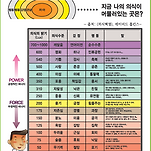<p></p><p>휠체어를 타고 있는 아이들의 골밀도와 근력강화에 최적의 자극찾기에 대한 논문</p><p>고빈도, low-magnitude vibraion자극을 60Hz로 하루에 5분씩, 6개월 자극한 그룹에서 골밀도, 근력이 최고 회복</p><p><br></p><p>panic bird.....</p><p><br></p><p><a href="javascript:checkVirus('grpid%3Dz4ZG%26fldid%3DOU8C%26dataid%3D25%26fileid%3D1%26regdt%3D20120414135852&url=http%3A%2F%2Fcfile246.uf.daum.net%2Fattach%2F1678C2354F890407276E31')"><img src="https://t1.daumcdn.net/daumtop_deco/icon/icon.hanmail.net/editor/p_pdf_s.gif" border="0" alt="첨부파일" class="vam"/> High-frequency, low-intensity vibrations increase bone mass.pdf</a></p><p><br></p><p style="line-height: normal; font-family: Helvetica;"><span style="font-size: 10pt;"><b>Abstract</b></span></p><p style="line-height: normal; font-family: Helvetica;"><span style="font-size: 10pt;"><b>Background</b>: <b><span style="color: rgb(255, 0, 0);">Disuse osteoporosis in children is a progressive disease,</span></b> which can affect&nbsp;</span><span style="font-size: 10pt;">quality of life. <b><span style="color: rgb(255, 0, 0);">High-frequency, low-magnitude vibrations (HFLMV) act as anabolic&nbsp;</span></b></span><span style="font-size: 10pt;"><b><span style="color: rgb(255, 0, 0);">signals for bone and muscle</span></b>.&nbsp;</span></p><p style="line-height: normal; font-family: Helvetica;"><span style="font-size: 10pt;"><br></span></p><p style="line-height: normal; font-family: Helvetica;"><span style="font-size: 10pt;">- 아이들에게&nbsp;disuse 골다공증은 진행성 질환이고 삶의 질에 큰 영향을 줌.&nbsp;</span></p><p style="line-height: normal; font-family: Helvetica;"><span style="font-size: 10pt;">- 고빈도, low- magnitude vibration자극은 뼈와 근육에 동화자극 신호로 작용함.&nbsp;</span></p><p style="line-height: normal; font-family: Helvetica;"><span style="font-size: 10pt;"><br></span></p><p style="line-height: normal; font-family: Helvetica;"><span style="font-size: 10pt;"><b>Methods</b>: A prospective, randomized double-blind and&nbsp;</span><span style="font-size: 10pt;">placebo controlled clinical trial to assess the efficacy and safety of regional HFLMV in &nbsp;</span><span style="font-size: 10pt;">disabled children was performed. Sixty-five children, 6 to 9 year-old, were randomized&nbsp;</span><span style="font-size: 10pt;">into three groups: placebo, 60 Hz and 90 Hz.&nbsp;</span></p><p style="line-height: normal; font-family: Helvetica;"><span style="font-size: 10pt;"><br></span></p><p style="line-height: normal; font-family: Helvetica;"><span style="font-size: 10pt;"></span><br></p><p style="line-height: normal; font-family: Helvetica; text-align: center;"><img src="https://t1.daumcdn.net/cfile/cafe/2748974154B6E55E27" class="txc-image" hspace="1" vspace="1" border="0" actualwidth="686" width="686" exif="{}" data-filename="스크린샷 2015-01-15 오전 6.43.34.png" style="clear:none;float:none;" id="A_2748974154B6E55E275056"/></p><p style="line-height: normal; font-family: Helvetica;"><span style="font-size: 10pt;"><br></span></p><p style="line-height: normal; font-family: Helvetica;"><span style="font-size: 10pt;"><br></span></p><p style="line-height: normal; font-family: Helvetica;"><span style="font-size: 10pt;">In the two active groups, a <b><span style="color: rgb(255, 0, 0);">0.3 g&nbsp;</span></b></span><span style="font-size: 10pt;"><b><span style="color: rgb(255, 0, 0);">mechanical vibration was delivered to the radii and femora for 5 minutes each day.</span></b></span></p><p style="line-height: normal; font-family: Helvetica;"><span style="font-size: 10pt;">Following the 6 months, the <b><span style="color: rgb(9, 0, 255);">main outcome was bone mineral density (BMD) </span></b>at the&nbsp;</span><span style="font-size: 10pt;">ultradistal radius (UDR), 33% radii (33%R) and femoral necks (FN). Secondary&nbsp;</span><span style="font-size: 10pt;">outcomes were area and BMC at the UDR, 33%R, and FN; grip force of the upper and&nbsp;</span><span style="font-size: 10pt;">lower limbs; motor function; and PedsQL eval&#8206;uation. An intention-to-treat analysis was&nbsp;</span><span style="font-size: 10pt;">used.&nbsp;</span></p><p style="line-height: normal; font-family: Helvetica;"><span style="font-size: 10pt;"><br></span></p><p style="line-height: normal; font-family: Helvetica;"><span style="font-size: 10pt;"><b>Results:</b> Fifty-seven children (88%) completed the protocol. <b><span style="color: rgb(255, 0, 0);">A significant increase&nbsp;</span></b></span><span style="font-size: 10pt;"><b><span style="color: rgb(255, 0, 0);">was observed in the 60 Hz group relative to the other groups in BMD-UDR (p=0.011),&nbsp;</span></b></span><span style="font-size: 10pt;"><b><span style="color: rgb(255, 0, 0);">grip force of the upper limbs (p=0.035), and “Daily activities item” </span></b>(p=0.035). A mixed&nbsp;</span><span style="font-size: 10pt;">model to eval&#8206;uate the response to intervention showed a stronger effect of 60 Hz, on&nbsp;</span><span style="font-size: 10pt;">patients with cerebral palsy, on UDR, and that between-subject variability significantly&nbsp;</span><span style="font-size: 10pt;">affected the response. There were no reported side effects of the intervention.</span></p><p style="line-height: normal; font-family: Helvetica;"><span style="font-size: 10pt;"><br></span></p><p style="line-height: normal; font-family: Helvetica;"><span style="font-size: 10pt;"></span><br></p><p style="line-height: normal; font-family: Helvetica; text-align: center;"><img src="https://t1.daumcdn.net/cfile/cafe/2656CF4154B6E57E19" class="txc-image" hspace="1" vspace="1" border="0" actualwidth="465" width="465" exif="{}" data-filename="스크린샷 2015-01-15 오전 6.44.07.png" style="clear:none;float:none;" id="A_2656CF4154B6E57E1926C3"/></p><p style="line-height: normal; font-family: Helvetica;"><span style="font-size: 10pt;"></span></p><p style="line-height: normal; font-family: Helvetica; text-align: center;"><img src="https://t1.daumcdn.net/cfile/cafe/233BA54154B6E57E2E" class="txc-image" hspace="1" vspace="1" border="0" actualwidth="448" width="448" exif="{}" data-filename="스크린샷 2015-01-15 오전 6.44.24.png" style="clear:none;float:none;" id="A_233BA54154B6E57E2E186E"/></p><p style="line-height: normal; font-family: Helvetica;"><span style="font-size: 10pt;"><br></span></p><p style="line-height: normal; font-family: Helvetica;"><span style="font-size: 10pt;"><br></span></p><p style="line-height: normal; font-family: Helvetica;"><span style="font-size: 10pt;"></span><br></p><p style="line-height: normal; font-family: Helvetica; text-align: center;"><img src="https://t1.daumcdn.net/cfile/cafe/2726CE4254B6E53B16" class="txc-image" hspace="1" vspace="1" border="0" actualwidth="545" width="545" exif="{}" data-filename="스크린샷 2015-01-15 오전 6.48.47.png" style="clear:none;float:none;" id="A_2726CE4254B6E53B16C988"/></p><p style="line-height: normal; font-family: Helvetica;"><span style="font-size: 10pt;"><br></span></p><p style="line-height: normal; font-family: Helvetica;"><span style="font-size: 10pt;"><br></span></p><p style="line-height: normal; font-family: Helvetica;"><span style="font-size: 10pt;">Discussion: This work provides evidence that <b><span style="color: rgb(255, 0, 0);">regional HFLMV is an effective and safe&nbsp;</span></b></span><span style="font-size: 10pt;"><b><span style="color: rgb(255, 0, 0);">strategy to improve bone mass, muscle strength, and possibly independence in children&nbsp;</span></b></span><span style="font-size: 10pt;"><b><span style="color: rgb(255, 0, 0);">with motor disabilities</span></b>.</span></p>
<!-- -->
카페 게시글
인대, 건, 연골, 뼈, joint
High-frequency, low-intensity vibrations increase bone mass and muscle strength in upper limbs, improving autonomy in disabled children
문형철
추천 1
조회 234
12.04.14 13:58
댓글 0
북마크 번역하기 공유하기 기능 더보기
다음검색


